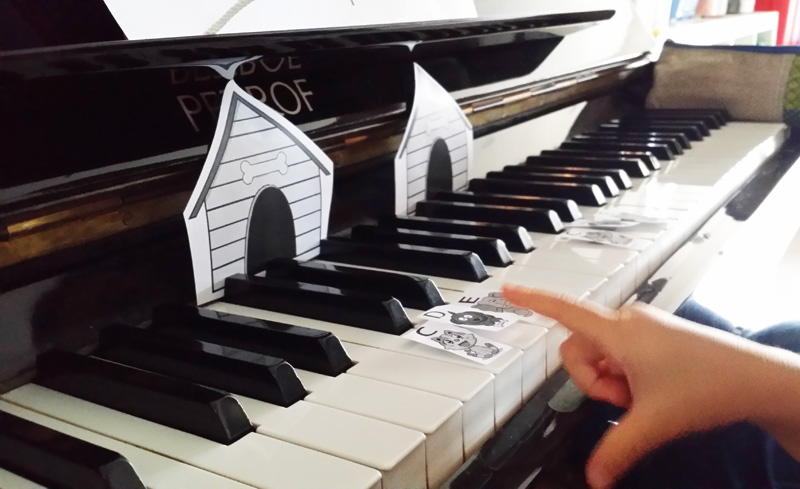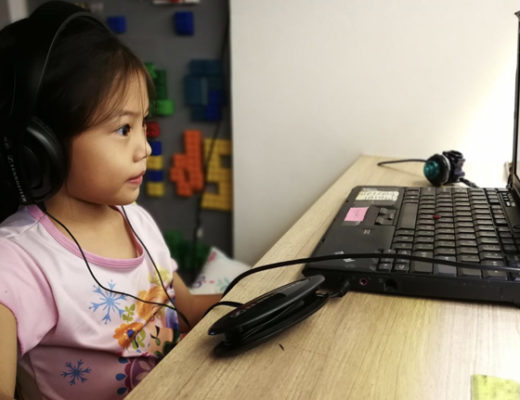The problem is real, and as an educator, I’ll even go as much to say, the problem is serious.
Children lose their creativity as they age, and many start losing that ability to think in divergent and non-linear ways when they enter school. Although there’s some shift in the focus now in the local school system to develop a child holistically and encourage creativity through project work and problem-based learning, schools still very much “teach to test” because our system hasn’t moved much to making formative assessment a mainstay in education yet. Think the PSLE and the GCE ‘O’ Levels most students go through, and you’d get a pretty clear idea that nothing much has changed in the summative method of assessment. A benchmark is used to evaluate student learning, skill acquisition and academic achievement in a one-time sitting of an examination, and this compels teachers and students alike to rely on a formulaic approach to ace the examination.
So yes, the problem of losing creativity as a child grows older is real – and serious, as a matter of fact – but as a parent, I say all is not lost. We don’t have to resign ourselves – or our children – to fate, or to the fact that research and statistics has proven it to be so, because there is much we can do as parents – our children’s first teachers – to help our kids develop those hungry and wondering minds so they can continue to be creative even as they get older.
Here are some suggestions:
1. Foster the imagination
If you follow me on my blog for a while, you’ll know that the number one thing that I’ve introduced to my three children are books, books and more books. Children stories ignite the imagination and take little ones to worlds far and beyond, and children can only go on adventures that can only be experienced with a good book in their hands. No TV show and no award-winning programme can ever replicate that firing up of a child’s imagination and turn them into life-long readers. I say, cut the screen time, and give your child a book. Or better still, immerse in one with your child on your lap, and read away!
For a list of inspiring children’s titles, you can check out the recommendations here, here and here. I bought all 50 books in the last list, and we’ve been reading and re-reading them at tuck-in every night, which is an awesome bedtime ritual to have, by the way.
2. Teach creative problem solving
I’m probably going to get some stones thrown at me here, but I think the first step to get kids to solve problem creatively is to allow them to talk nonsense.
You heard me right. Let them talk – no holds barred – and don’t judge them (unless the nonsense includes bad language, that is).
Hear me out on this. In a world of model answers, rule-following memorisation and waiting for the right answer have become acceptable and almost compulsory. I prefer to let my children take me on a spin first with what they think can help solve a problem and then help them do a little critical thinking along the way.
Case in point: My six-year-old son wants to increase his savings (to buy a book from the bookstore which I am not buying for him) but doesn’t know how to.
So Ben comes to me with this problem and hopes I can help him find the answer, but I encourage him to think crazy, talk crazy and solve his problem with whatever comes to his mind instead. And amongst his solutions over a span of weeks, he tells me about taking money from a bank (also called robbing), waiting for ten-cent coins to drop from the sky, taking $10 from my wallet (also known as stealing, in my opinion), help our helper and ask her to pay him, and performing for people so they can give him money (like a busker).
Every suggestion he came to me became a teachable moment to ask, ‘What might be a possible outcome?’ (as in the case of taking money from the bank), ‘How would so-and-so feel?’ (like my helper who might have to part with her hard-earned money) and even ‘Do you you think you could carry it out?’ (perform in front of an audience or standing under the sky for I-dunno-how-long to wait for ten-cent coins to fall), which helped him consider more perspectives and evaluate what went through his mind.
Finally, he told me that he could ask the neighbour if he could throw her trash for her nightly so she doesn’t have to walk out to the common chute. It was something he could do, he said. It was something he felt he could commit to, he also added. And he was going to boldly ask her for 20 cents every night he helped her walk out to throw trash.
And he did. Much to my neighbour’s delight and his satisfaction.
That’s some entrepreneur talk already, for a six-year-old. Ben discovered a possibility ALL by himself.
3. Surround your child with construction toys and natural materials
Construction toys and your typical egg carton, cardboard and bottle caps can hardly match the latest battery-powered robot or video game for their flashiness value, but the former helps children develop divergent thinking, not to mention motor skills, hand-eye coordination, spatial skills and creative thinking.
Make LEGO bricks and wooden toy blocks the staples of play for your child. Throw in some kitchen rolls or toilet rolls, empty Yakult bottles, ice cream sticks and milk bottle caps, and encourage your child to create, design and innovate. Open-ended materials like these allow for divergent – as opposed to convergent – play and give children an intuitive grasp of how things work, fit and align, together with a visual-spatial sensibility and lots of fun creating, dismantling and building.
You’ll be surprised like I have been.
4. Let your child decide what he wants to learn
I’ve been very inspired by the Reggio-Emilia approach for early years education which is based on the fundamental premise that “the child is made of one hundred” – a hundred languages, a hundred hands, a hundred thoughts, a hundred ways of thinking, of playing, of speaking, of listening, of marveling, of loving a hundred joys… (Loris Malaguzzi, the guiding genius of Reggio). What strikes me most in this approach of teaching young children is the use of “provocations” which are deliberate and thoughtful decisions made by the teacher to extend the ideas of children, who are viewed as capable, inquisitive learners. I like how in this approach the teacher extends what the children want to know or learn and become the facilitator to help children explore.
One of the things parents can do is to give the child a say on what he or she wants to learn and embark on a learning journey together with the child by putting together open-ended materials for exploration, miniature museums at home or simply tapping on that “hundred” ways of thinking, playing and marveling for learning.
For more Reggio-inspired teaching and learning, follow these awesomely creative people and blogs:
5. Encourage curiosity (by allowing your child to feel bored)
Children need to be given the room to feel boredom because this negative emotion can be such a motivating force to push them to create their own entertainment (source). Nobody is responsible for amusing them and if you would just try to resist the urge to turn on the TV and let your kids get bored, you might be surprised to see what they can entertain themselves with. My kids would sometimes grab a book and sit quietly on the couch or grab their stuffed toys and suddenly find reason to go on a “holiday”, “excursion”, “theme park visit” or “picnic” with them. Sometimes my eldest would lie in bed and talk to himself, dreaming up worlds in his imagination, and my youngest might decide to roast some “chickens” (he once used a hanger, some strings and pegs to hang and tie all the caps at home and called them chickens, “roasting” them by the bedside lamp!). My little girl would start combing her ponies’ hair and sort her paraphernalia out, or just sit by the window and watch the world go by. Whatever they set out to do from the state of boredom has always yield more rewards and surprises than anything negative (some people think children become destructive when they are bored but inquisitiveness can be managed with boundaries set).
The unpleasant sensation of boredom have often propelled my children to search for something engaging, and this, to me, keeps them constantly creative.
***
Creativity fosters mental growth in children by providing opportunities for trying out new ideas, and new ways of thinking and problem-solving. Somewhere along the way we might have lost it growing up, but we could always make it a part of our parenting philosophy to help our children so they never lose that creative spark even as they grow older.







No Comments